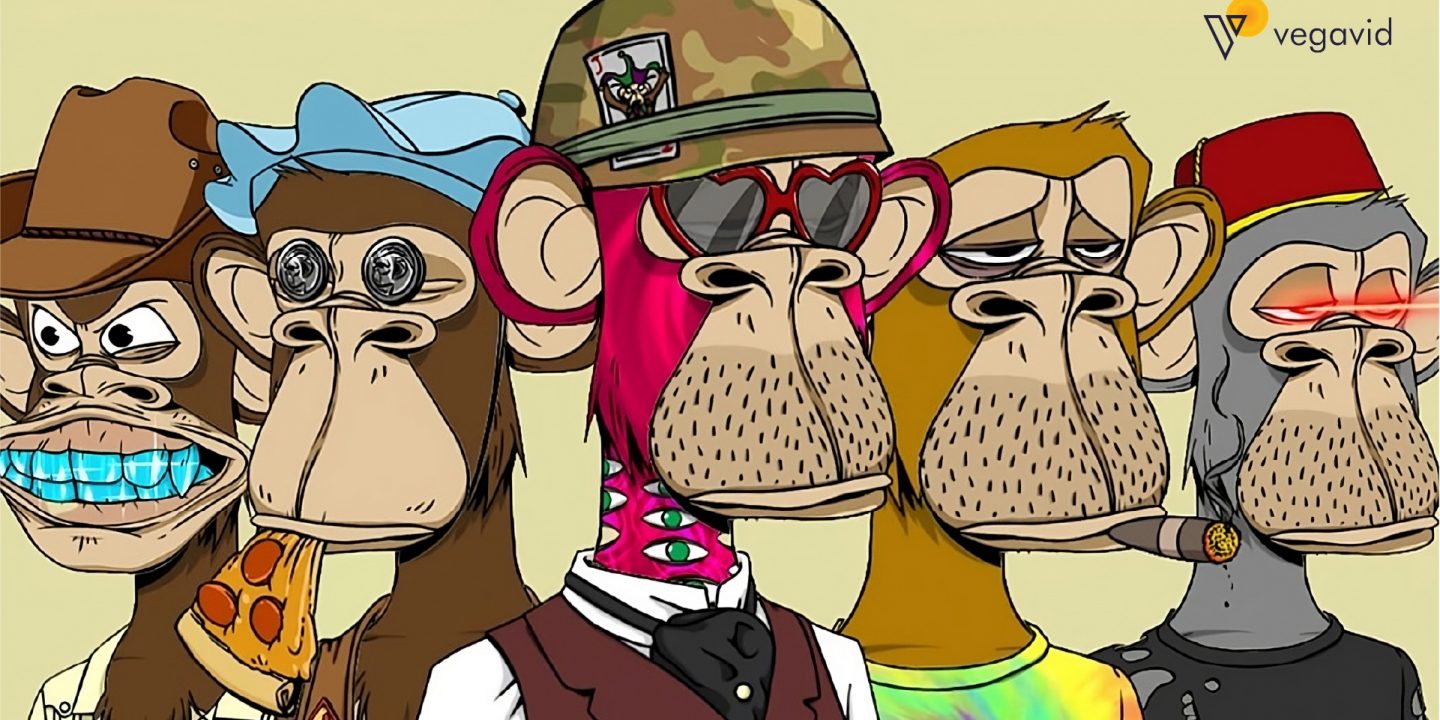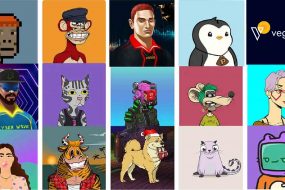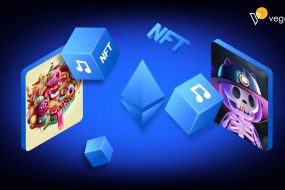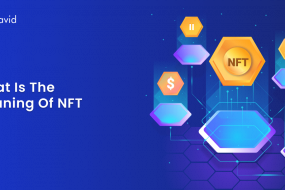
The concept of digital ownership has recently been revolutionized by non-fungible tokens or NFTs. NFTs utilize blockchain technology to create unique digital assets that represent ownership of virtual items like artwork, collectibles, and in-game items. This has enabled a whole new market of digital scarcity and creativity, providing content creators and artists with a new avenue for monetizing their work.
In this blog, we will explore the concept of NFTs and what makes them different from other digital files.
we will also discuss the types and challenges associated with the concept. At, last this blog will analyze different steps that can be taken for creating an NFT.
By the end, you’ll have an understanding of what makes NFTs unique, the process for creating your own, and some of the trade-offs to weigh before diving into this rapidly emerging market for digital goods. Let’s begin our exploration of non-fungible tokens and the future they may help create.
What is an NFT?
A non-fungible token (NFT) is a piece of data used to identify separate digital assets that cannot be exchanged. It is kept up-to-date via a blockchain, a form of electronic ledger. Digital music, video, and other media formats can be represented using NFTs. They may also stand in for actual things like art and real estate. Each NFT is distinct from others of its kind and cannot be used interchangeably, which effectively produces digital scarcity and subsequently value. NFTs are supposed to be gathered and owned, as opposed to cryptocurrencies, which are fungible (interchangeable) tokens intended to be traded. An NFT’s worth is influenced by things including its novelty, market demand, and link to the actual world. To issue ownership rights and keep a safe public record of transactions, NFTs employ blockchain technology. By giving content producers the ability to sell their products directly to customers, they get beyond conventional gatekeepers.
Types of NFTs
Here are the most common types of NFTs:
- Art – NFTs are being tokenized for use as digital artworks, including memes, GIFs, movies, and photographs. Many artists are now creating NFT art and selling them for significant amounts.
- Collectibles – NFTs representing virtual collectibles like trading cards, stickers, in-game items, avatars, and more. These digital collectibles mimic their real-world counterparts.
- Music – Musicians are minting NFTs that represent their songs, albums, or other audio content. This allows them to sell exclusive rights and experiences to fans.
- Videos – Short video clips, memes, and GIFs are being sold as NFTs. Popular examples include NFL highlight reels and meme collections.
- Domain Names – Domain name registrars are starting to tokenize domain names as NFTs that can be bought and sold on the blockchain.
- Metaverse Assets – Virtual real estate, avatars, skins, and other in-game assets from metaverses and virtual worlds are being bought and sold as NFTs.
- Tickets – Event tickets represented as NFTs can be securely collected, sold, and traded on the blockchain.
- Collectibles – Items from the physical world, like trading cards, toys, and sneakers, are being tokenized as NFT collectibles that represent digital ownership.
New Forms of Art Ownership
New types of art ownership that were previously impossible for digital creations are now conceivable thanks to NFTs. By tokenizing digital artworks, NFTs effectively create scarcity and ownership rights for assets that were previously easily copied and distributed. Now, artists can prove authenticity and ownership of their digital collections through the blockchain. There is an irrefutable record of who owns each NFT art piece at any point in time.
Additionally, artists may program smart contracts to pay them royalties on any future secondary sales of their NFT artwork. This “resale rights clause” encoded in the NFT gives artists a share of the profits each time their work changes hands – a concept not previously applicable to digital art. Through the use of shared tokens, NFTs have also facilitated collaborative art by enabling numerous artists to claim partial ownership of a single work of art. Overall, NFTs have transformed digital art by conferring the key attributes of physical art to the virtual realm – authenticity, scarcity, verifiable ownership, and resale value. This shift has fueled unprecedented success for many digital artists.
Creating an NFT Art without Coding: Step-by-Step Guide
Listed below is a step-by-step tutorial for making an NFT:
- Prepare Your Art: Get the digital artwork you plan to mint as an NFT ready. This might be a digital collectible such as an image, movie, audio file, or other.
- Choose Your NFT Platform: To list your NFT, select an NFT marketplace or minting platform. Popular choices include Foundation, Rarible, SuperRare, OpenSea, and others.
- Select a Blockchain: Choose the blockchain on which you wish to mint your NFT. Ethereum is currently the most popular option.
- Set Up Your Crypto Wallet and Purchase Some Cryptocurrency: You’ll need a crypto wallet like MetaMask or Coinbase Wallet to store the cryptocurrency needed to mint and list your NFT. Then buy some ETH to fund the wallet.
- Mint Your NFT and List It on the Marketplace: Follow the platform’s instructions to mint your NFT by uploading your art and setting options like the name, description, and number of copies. Pay the minting fee in ETH.
- Promote Your NFT: To draw buyers, after it has been listed, advertise your new NFT on social media sites and in NFT communities. For your initial sale, you may also choose a reserve price.
- Distribute Royalties: If you programmed a royalty scheme into your NFT’s smart contract, you will receive a cut of any subsequent sales automatically.
- Withdraw Sale Funds: As your NFT sells, you can withdraw the ETH proceeds from your crypto wallet to your bank account.
How to create NFT Without Coding
An NFT or non-fungible token is a unique digital item like a photo, video, or audio recording that is stored on a blockchain. Using some basic skills and tools, you can create your NFTs without knowing how to code.
- First, decide what kind of content you want to turn into an NFT. This could be a digital photo, video clip, song, or any other original artwork. The key is that the content is solely owned by you and you have the right to sell it.
- Next, create the digital content you want as an NFT using common editing tools. For photos, use Photoshop or Canva. For videos, use iMovie or Adobe Premiere Pro. For audio, use Audacity to record and edit a song. The quality of the content is important for potential buyers.
- Then, choose an NFT marketplace to list your token for sale. The most popular options are OpenSea, Rarible, Foundation, and Nifty Gateway. Sign up for a free account and verify your identity.
- You will also need a cryptocurrency wallet like Metamask or Coinbase Wallet to hold the funds from NFT sales. Download the wallet, create an account, and store some Ethereum (ETH) or the blockchain’s native currency.
- Once signed up on the marketplace and your wallet is ready, you simply need to “mint” your NFT by uploading your digital content and giving it a name and description. You’ll also set the price in ETH that you want to sell it for.
- The NFT marketplace will generate a unique token linked to your content and list it for sale. Now it’s time to promote your NFT by sharing it on social media platforms and in NFT and crypto communities. You may need to lower your price if it doesn’t sell right away.
While creating an NFT requires some basic tools and setup, the keys are creating high-quality original content and effective promotion. With persistence and the right price, your NFT can find the right buyer without any coding knowledge needed.
Impact and Challenges
Here are some of the impacts and challenges of NFTs:
Positive Impacts:
- Empowering creators – NFTs have given content creators like artists, musicians, and collectors a way to monetize their work directly without intermediaries.
- Democratizing wealth – The NFT market has seen huge successes for previously unknown artists, empowering more diverse voices.
- Inspiring innovation – The NFT space has spawned new forms of art, financial products, and business models.
- Proving provenance: The blockchain offers an unchangeable record of NFT ownership and provenance, assisting in proving their worth and validity.
Challenges:
- Environmental impact – The Ethereum network consumes a large amount of energy for minting and trading NFTs, raising sustainability concerns.
- Speculative bubble – There are concerns the current NFT craze resembles a speculative bubble, driven more by hype than underlying value.
- Fraud and theft – Like with any new technology, there have been cases of NFT fraud, scams, and theft due to a lack of consumer protections.
- Volatility – The value of NFTs is closely tied to the price volatility of cryptocurrencies, making them a risky investment.
- Unregulated market – The still nascent and unregulated NFT market lacks oversight and consumer protections.
Conclusion
Non-fungible tokens have introduced a huge paradigm shift for digital creators by making their works uniquely collectible, and valuable. The NFT art economy is still in its nascency, but it is clear that this technology has enormous potential to disrupt traditional art markets and empower new voices. While exciting new business models, communities, and hype around NFTs abound, some significant risks and criticisms must be addressed to ensure this technology matures sustainably and beneficially.
NFTs might revolutionize how art is verified, rare digital goods are transferred, and content producers monetize their work with awareness and responsible regulation. But the future of this new art form will depend greatly on how wisely the opportunities of NFTs are harnessed while mitigating their challenges, from environmental impact to financial volatility. The art of real uniqueness and worth that NFTs provide may open up new vistas for creativity, trade, and interaction as the world of digital collectibles continues to grow.











